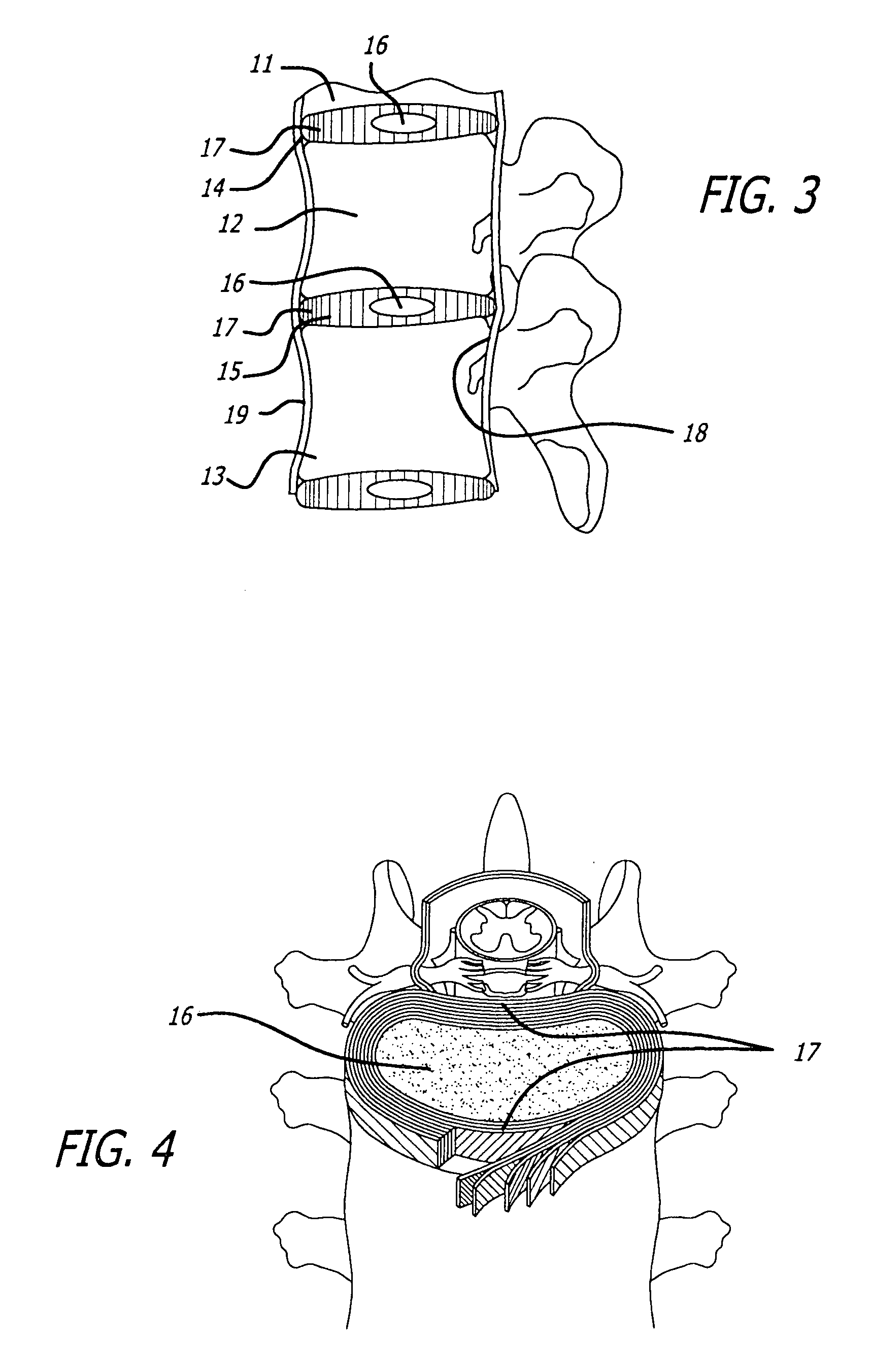Prosthetic spinal discs
a spinal disc and prosthetic technology, applied in the field of prosthetic devices, can solve the problems of disc disease limiting spinal motion or cushioning, pain, loss of muscle control or even paralysis, chronic and severe back pain, etc., to reduce the overall thickness of compressed springs, reduce the overall stress, and reduce the effect of localized stress
- Summary
- Abstract
- Description
- Claims
- Application Information
AI Technical Summary
Benefits of technology
Problems solved by technology
Method used
Image
Examples
Embodiment Construction
[0070]FIG. 1 is a representation of a human spine. The vertebrae include seven cervical vertebrae 1 in the neck, 12 thoracic vertebrae 2 below the neck, five lumbar vertebrae 3 of the lower back, one sacrum 4 below the lumbar region and one coccyx 5.
[0071] The adjacent vertebral bodies 11, 12 and 13 (FIGS. 2 and 3) are separated by intravertebral discs 14 and 15. Each disc has a nucleus pulposus 16 surrounded by an annulus fibrosus 17. See also FIG. 4. FIG. 3 also shows the posterior longitudinal ligament 18 and the anterior longitudinal ligament 19, which secure the vertebrae and disc together. Other ligaments, which are not discussed, also are present.
[0072] The representation of a disc in FIG. 4 shows the nucleus pulposus surrounded by the outer annulus fibrosus. The annulus fibrosus acts as a constraining ring primarily composed of collagen. It allows the intervertebral disc to rotate or bend without significantly affecting the hydrostatic pressure of the nucleus pulposus. The...
PUM
 Login to View More
Login to View More Abstract
Description
Claims
Application Information
 Login to View More
Login to View More - R&D
- Intellectual Property
- Life Sciences
- Materials
- Tech Scout
- Unparalleled Data Quality
- Higher Quality Content
- 60% Fewer Hallucinations
Browse by: Latest US Patents, China's latest patents, Technical Efficacy Thesaurus, Application Domain, Technology Topic, Popular Technical Reports.
© 2025 PatSnap. All rights reserved.Legal|Privacy policy|Modern Slavery Act Transparency Statement|Sitemap|About US| Contact US: help@patsnap.com



